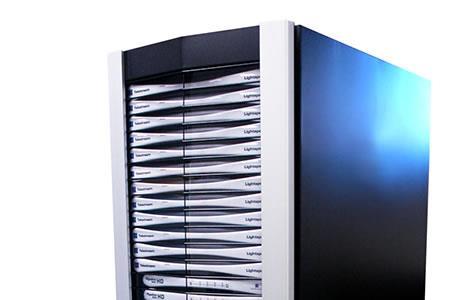Is cloud an M&E cure-all? Can it be cost-efficient whilst protective of mission-critical assets and operations? Telestream embarked upon a targeted research and development initiative to find answers.
“Is cloud an M&E cure-all? Already there is a strong body of anecdotal evidence that this is not the case. It can be transformative in certain scenarios, but it presents significant business risks in others. How can media businesses harness the power and cost-efficiency of cloud-based operations whilst simultaneously protecting their mission-critical assets and on-premise operations?” states Anna Greco, president of media workflow and production business at Telestream.

To answer these questions, Telestream recently embarked upon a highly targeted research & development initiative that seeks to align with its customers’ long-term cloud ideals while providing pragmatic solutions for the transition.
Part of this initiative involves an extensive series of customer interviews that is yielding key information and insights as to the current status of cloud-based operations within M&E business operations of many different sizes and scales. The customer interviews encompassed a broad base of enterprises from major US-based broadcasters to international production facilities and streaming service providers.
“What we are seeing is a divergence of opinion between large-scale and smaller users of our Vantage media processing platform,” explained Greco. “Larger customers tend to be more vocal about their desire to migrate part of their operations to the cloud. They are looking for alignment within various prescriptive cloud approaches.”
“The migration issue is being driven by common sense and real-world economics,” explains Max Denton, Telestream’s Vantage product manager. “Most of our Vantage customers are investigating how to move the emphasis of their businesses to cloud-based enterprise models as opposed to wholesale migration.”

“Smaller facilities and post houses have a series of concerns about putting data into the cloud for a host of reasons, but largely because of data security concerns, “ Denton explains. “In general terms, processing follows the media. If your media is on-premise then it makes sense to process it on-prem since you avoid cloud egress charges.”
Media Flow is another key consideration. Telestream’s research indicates that large scale customers tend to have existing favorable connectivity agreements in place with public cloud providers whereas smaller scale operations tend not to.
For these businesses there is a stark economic reality about cloud. “I call it the Hotel California scenario,” comments Max Denton referencing the iconic Eagles song. “Businesses can check in their data for free but can’t ever leave without paying extortionate egress charges.”
“In many scenarios, the cost to download the file will be greater than the cost of the transcoding. Not only does the media flow have to be figured out but the infrastructure has to be laid down to the customer in terms of high-bandwidth internet connections. It’s critical that media flow is revisited in order to extract the maximum value from cloud,” Denton affirmed.
Transformation is a journey, not a light switch
However appealing the cloud sounds, it is important that companies employ the technology platform that best suits their workflows at the right time. Telestream’s solution models do not assume that customers will wholesale move all their production and distribution capabilities to the cloud at once. Instead, the company employs a flexible, conservative hybrid approach where the cloud is valuable, but it recognises that there are several potential weaknesses in cloud strategies that need to be factored into customer decisions.
“We’ve seen a number of core broadcast workflows that don’t transfer easily to the cloud, such as live transcoding workflows,” comments Chris Osika, chief marketing officer at Telestream. “At the current stage of cloud’s evolution these are not optimised within cloud-based environments. We believe that working in a hybrid environment leads to a more efficiently optimised infrastructure environment.
“Most Telestream customers are brownfield sites with considerable legacy infrastructure issues,” Osika continues. “We can help them along a path of sensible transformation. Our technology does not require we advocate a wholesale infrastructure switch-out. Transformation is a journey, not a light switch: we act as a trusted partner and as such we would not help by suggesting that customers throw everything into the cloud.”
Targeted research yields Vantage hybrid solution
Telestream’s customer research highlights that many existing Vantage users have certain workflows within their enterprise operations that are cloud-centric – these might focus on distribution workflows, either direct to consumer or to other third parties.
“In this situation, the user is very aware of the advantages of cloud and is ready to start the transition of their business operations,” explains Max Denton. “But other parts of their business are at a more exploratory stage. A drive to cloud switchover can result in more complex, messy, mezzanine workflows. This is where hybrid solutions fit.”

Telestream has been working on a solution to this challenge. Their answer lies in additions and extensions to its Vantage media processing platform: these will be introduced during the first quarter of 2019 and will showcased at NAB 2019. These new cloud-enabled media processing actions enable existing Vantage users to futureproof their long-term investment in production workflows as they transition to the cloud in a staged strategic fashion.
These cloud-based features and functions enable users to select encoding actions within their Vantage workflows that would normally consume on-prem resources and to export those actions to the cloud in ways that Vantage continues to control and orchestrate those actions, but it is now consuming hyper-scale cloud resources via Telestream Cloud. Customers pay for these actions on a flexible per content minute basis.
“Now, Vantage enables users to employ cloud-based resources and it gives them the ability to use Vantage actions and features that they might not have licenses for within their on-prem Vantage installation,” states Denton. “It is a hybrid model that enables a customer-managed on-premise installation to be augmented from an infrastructure perspective and a licensing perspective by Telestream.”
“The new Vantage features will help increase business agility within enterprises of all sizes and scales since their throughput of content is no longer bound to their physical on-premise infrastructure,” stated Max Denton. “They can significantly increase output capacity at peak times by exporting jobs to Telestream Cloud which is built on the back of the largest public cloud providers worldwide. We have a very large resource pool to pull on, so that we can minimise queue times – essentially to zero.
“Additionally, this seamless handoff to cloud can be used to keep media in the cloud whenever possible. In many cases, it will make more sense to have Vantage process the media via these new cloud-based SaaS actions to either reduce or eliminate the data transfer.
“Telestream Vantage is the industry’s leading tool for automating content processing, repurposing and distribution. These new cloud-enabled media processing actions enable Vantage to utilise the benefits of public cloud and provides consumption-based pricing in a streamlined and straightforward fashion,” concluded Max Denton.
One thing is for certain – Telestream will have a busy show at NAB 2019.
For more information about this initiative contact your local Telestream representative or go to www.telestream.net/vantage.
































No comments yet